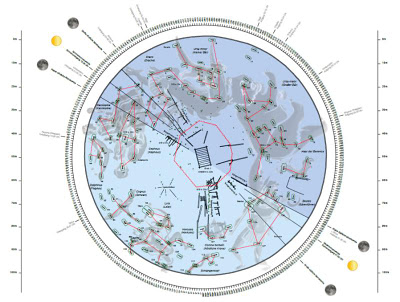

| Visitors Now: | |
| Total Visits: | |
| Total Stories: |

| Story Views | |
| Now: | |
| Last Hour: | |
| Last 24 Hours: | |
| Total: | |
Early Celtic ‘Stonehenge’ located in Black Forest fits sky constellations of N. Hemisphere
Early Celtic 'Stonehenge' located in Black Forest
ArchaeoHeritage, Archaeology, Breakingnews, Europe, Germany, Western Europe 1:00 PM
 |
| General plan of the early Celtic burial mound with sky constellations [Credit: Image courtesy of Römisch-Germanisches Zentralmuseum] |
The position of the burials at Magdeleneberg represents a constellation pattern which can be seen between Midwinter and Midsummer. With the help of special computer programs, Dr. Allard Mees, researcher at the Römisch-Germanischen Zentralmuseum, could reconstruct the position of the sky constellations in the early Celtic period and following from that those which were visible at Midsummer. This archaeo-astronomic research resulted in a date of Midsummer 618 BC, which makes it the earliest and most complete example of a Celtic calendar focused on the moon.
Julius Caesar reported in his war commentaries about the moon based calendar of the Celtic culture. Following his conquest of Gaul and the destruction of the Gallic culture, these types of calendar were completely forgotten in Europe. With the Romans, a sun based calendar was adopted throughout Europe. The full dimensions of the lost Celtic calendar system have now come to light again in the monumental burial mound of Magdalenenberg.
Source: Römisch-Germanisches Zentralmuseum [October 11, 2011]


